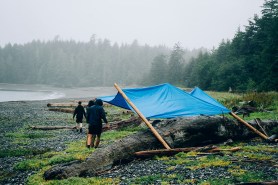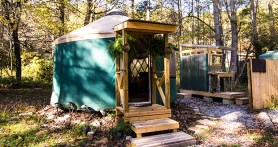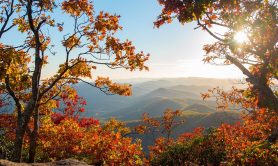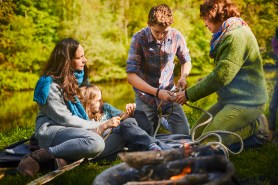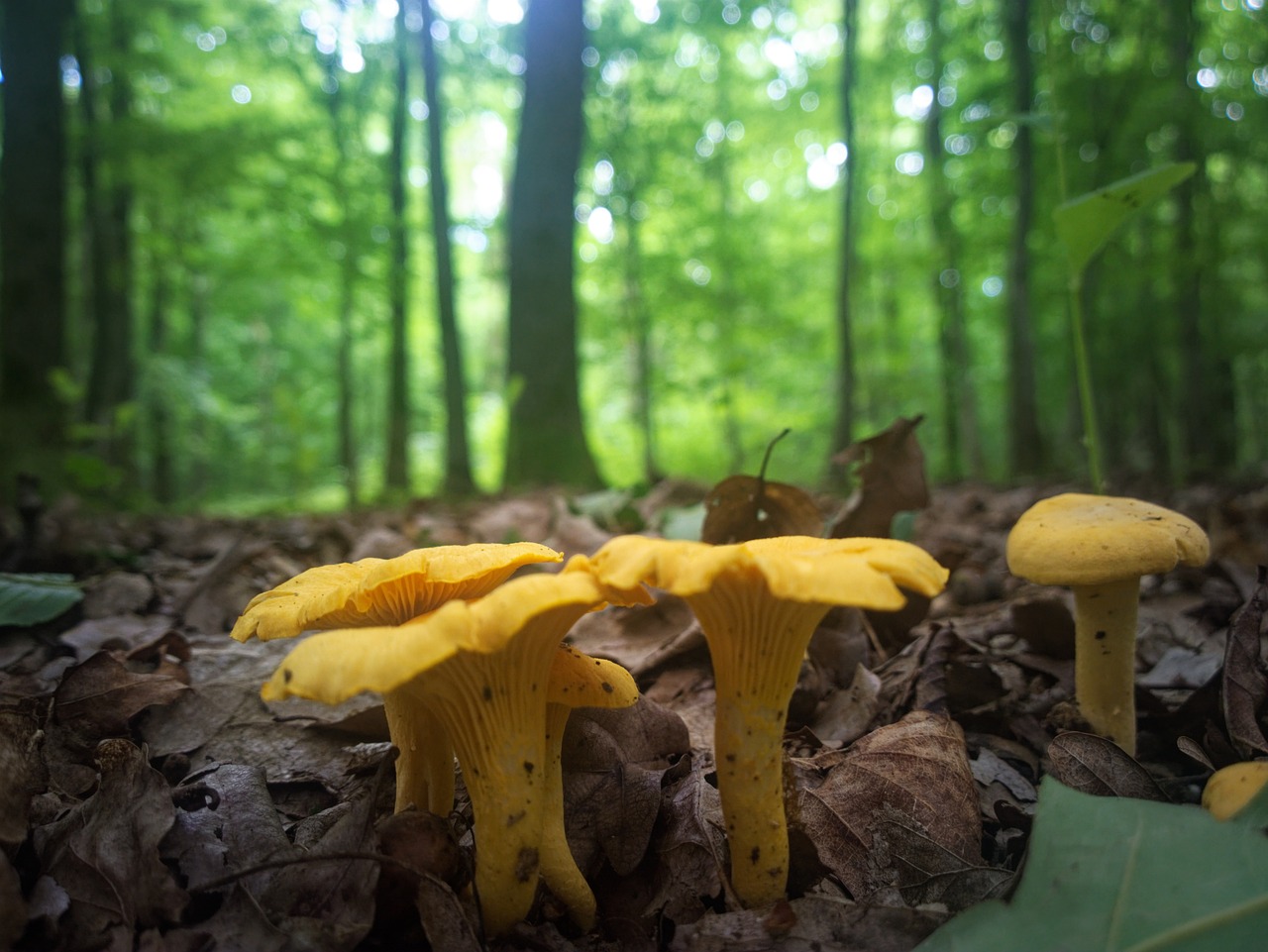

The Pacific Northwest is a veritable wonderland for mushroom enthusiasts.
Videos by Outdoors with Bear Grylls
The region – which runs up the west coast of North America from Northern California through British Columbia to the Alaska, is know for high rainfall, and temperate climate – perfect conditions for ‘shrooms, morels and other fungi.
Among these are the highly sought-after golden chanterelles (Cantharellus cibarius), renowned for their unique flavor and meaty texture.
Let’s explore why the Pacific Northwest is a prime location for foraging these valued mushrooms during the late summer and fall seasons.
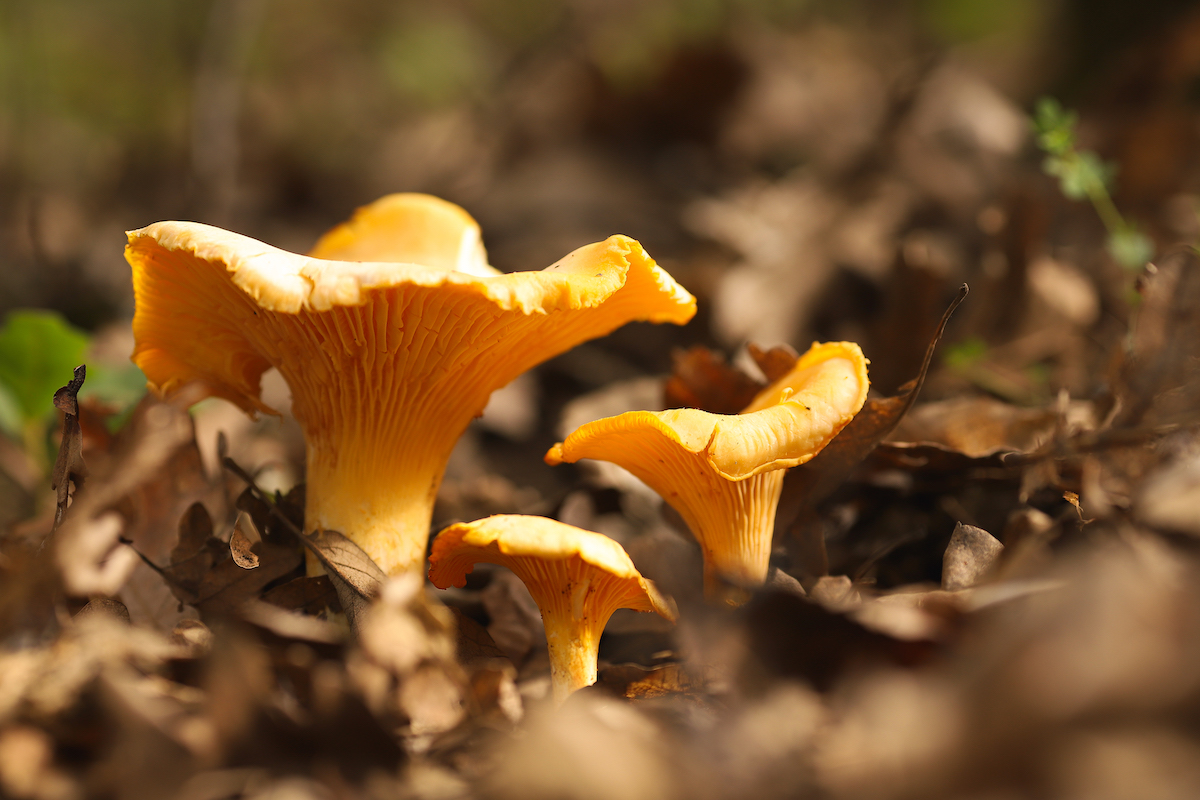
What are Golden Chanterelles?
Golden chanterelles are easily distinguishable by their trumpet-like shape, vibrant yellow to orange color, and the distinctive gill-like ridges that run down their stems. It grows with conifer trees like the Douglas fir and is larger in size than most of the others kinds of chanterelles.
They are known for their unique fruity aroma, often compared to apricots, and a mildly peppery taste. These characteristics have earned golden chanterelles a place in the heart of many culinary enthusiasts. If you find them in the wild, you’ll save up to $20 a pound over getting them in the local grocery store.

The Pacific Northwest: A Mycological Paradise
The Pacific Northwest’s unique climate offers the ideal conditions for golden chanterelles to flourish. The region’s moist, temperate forests provide a rich and diverse habitat for these fungi. The moss-covered ground, coupled with a mix of coniferous and deciduous trees like Douglas fir and Sitka spruce, creates the perfect living substrate for chanterelles.
Washington: The Evergreen State, with its extensive forest cover, is a prime location for chanterelle hunting. The Olympic Peninsula in particular, with its damp, cool climate, is a hot spot for these fungi. The Mt. Baker-Snoqualmie National Forest and Gifford Pinchot National Forest are also popular locations for foraging.
Oregon: Oregon’s moist coastal forests and Cascade Mountains are ideal for chanterelle growth. The Tillamook State Forest is a favorite amongst foragers. The Mt. Hood National Forest also offers abundant chanterelle patches, especially around the Zigzag Ranger District.
Northern California: The northern parts of California’s coastal and mountainous regions, such as the Mendocino National Forest and the Redwood forests, are rich in golden chanterelles. The damp, cool climate under the towering redwoods provides an excellent habitat for these mushrooms to thrive.

Foraging Golden Chanterelles: Tips and Tricks
Like any wild edible fruit, berries or fungi, foraging for golden chanterelles can be a rewarding experience, but it’s essential to be well-prepared and informed.
Here are a few tips:
Season: Chanterelles usually start to appear in late summer and continue to grow throughout the fall, often peaking after the first heavy autumn rains.
Proper Identification: Be sure of your identification before consuming any wild mushroom. Chanterelles are often confused with the toxic Jack O’Lantern (Omphalotus olearius and Omphalotus illudens) mushrooms. However, unlike chanterelles, Jack O’lanterns have true separated gills, a more orange color, and grow in clusters on wood.
Omphalotus olearius and Omphalotus illudens are toxic, so make sure you are identifying properly. If you’re not 100% certain before consuming, check with an expert or don’t risk it.
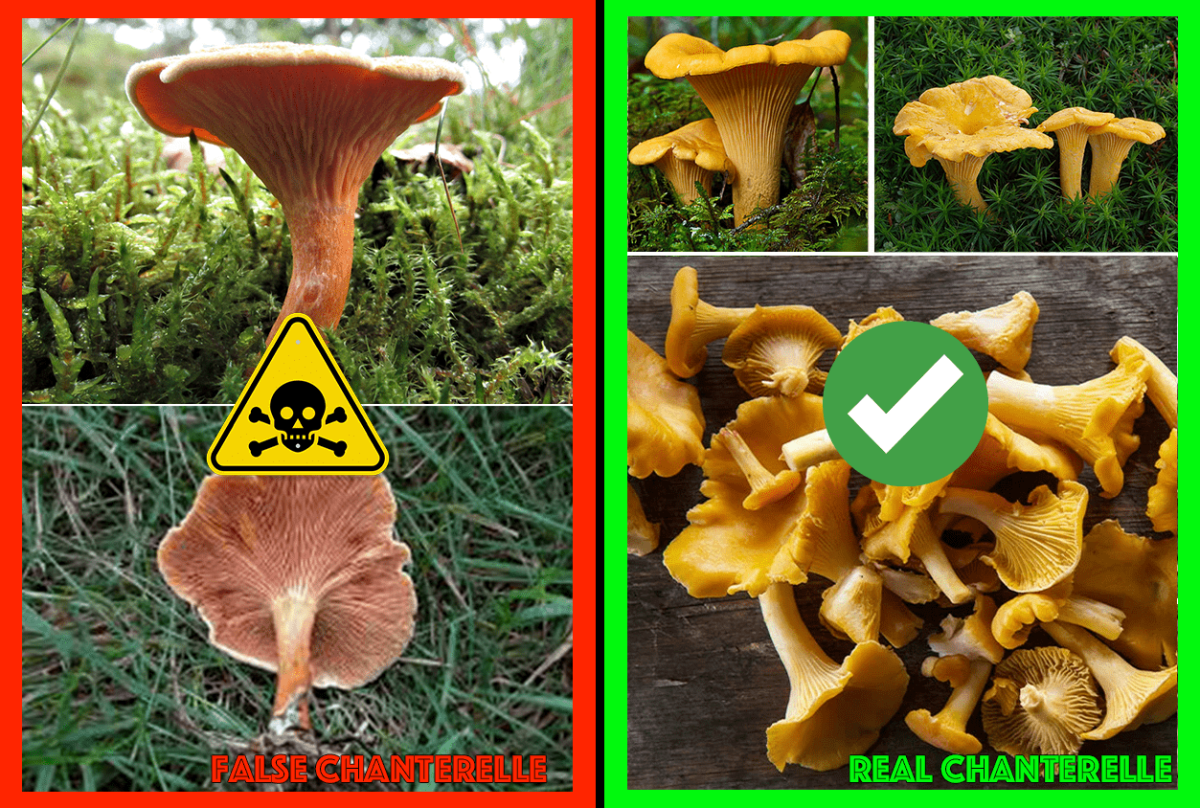
Don’t eat Jack O’lantern mushrooms (left). Wild chanterelle’s should only be collected and eaten by knowledgeable and experienced foragers. image by MushroomExam.com
Sustainability: Only pick mature mushrooms, leaving the young ones to grow and reproduce. Avoid picking every mushroom in a patch — this allows the population to sustain itself.
Check Regulations: Some areas require permits for mushroom foraging. Always check local regulations before you start.
Preservation: Chanterelles can be preserved by drying, freezing, or canning. However, they are best enjoyed fresh.





